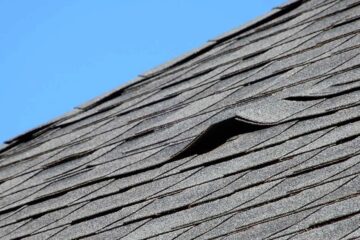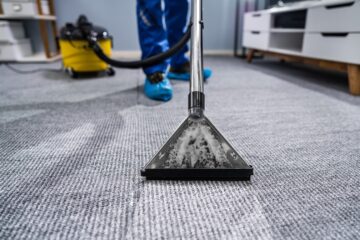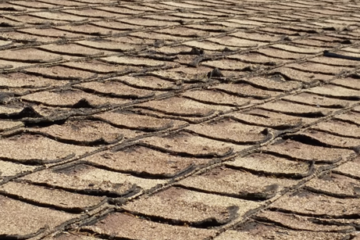Hurricane Preparedness For Your Home

According to government forecasters, the Atlantic hurricane season will be busy. It is expected that it will begin on June 1st and continue through November 30th. A hurricane or severe storm is not something to be taken lightly. It can cause damage to your roof and other areas of your home. There are steps you can take to reduce the damage to your roof from strong winds, rain, and debris.
This 7-day guide will help you prepare for the next week and protect your family and property during and after a storm.
How Hurricanes Can Impact Your Roof. The roof is the most important structural component in your South Florida home and it takes the brunt when Mother Nature unleashes a hurricane.
Category 1: Minimal Hurricane
Wind Speeds 74-95 MPH
Injury: Damage is mostly directed at unanchored mobile homes and shrubbery. It can also cause damage to poorly constructed structures.
Category 2: Moderate Hurricane
Wind Speeds 96-110 MPH
Damage: This can cause damage to the gutters and shingles. It can also cause damage to the windows and doors of buildings. Poorly constructed structures, shrubbery, and mobile homes can cause significant damage.
Category 3: Extensive Hurricane
Wind Speeds 111-130 MPH
Damage to Roof Coverings and Decking: Wind and other airborne debris can cause severe damage to roof coverings and decking. This damage can include broken tree branches and structural damage to small homes and utility buildings. Mobile homes and poorly built buildings are often destroyed.
Category 4 Extreme Hurricane
Wind Speeds 131-155 MPH
Damage: Wind and airborne debris such as tree limbs and broken branches can cause significant damage to roof coverings, decking, and gable end. You can also experience complete roof collapses in small homes and total destruction of mobile homes, windows, and doors.
Category 5: Catastrophic Hurricane
Wind Speeds 155 MPH
Roof Damage: Where the decking has been torn away, this can cause severe roof damage. It can also lead to complete building collapses and even the destruction of small utility buildings. It can also cause all shrubs, trees, and signs to be destroyed, as well as complete destruction of mobile homes, and extensive window damage.
How to Prevent Hurricane-Related Roof Loss in Tampa
Hurricane winds can cause roofs to collapse as the pressure over them drops. The pressure below the roof is raised by holes and entry points. This causes the roofing panel to move upwards and can cause damage or even complete roof collapse. Even minor roof damage can make your Tampa home vulnerable to water intrusions. This could be anything from a small leak up to a major flood.
Hurricane preparedness is key to reducing your roof damage risk. These are some of the most important steps you can take in order to avoid excessive wind damage and help you withstand a storm.
Get Your Roof Inspected
Make sure your roof is in top shape to protect your home from severe weather. Your roof may be more vulnerable to damage from the past, such as leaks or loss of shingles.
Start by inspecting your roof, and rain gutters, and ensuring water flows freely down the rain spouts away from your home. Also, ensure flashing defects are addressed, remove any loose soffits and ventilation turbines, as well all debris from the roof surface.
It is important to repair any roof damage by replacing missing or damaged shingles, tiles, or metal. A city inspector, or civil engineer, will inspect your roof to make sure it meets the Florida Building Code.
Only a qualified roofer should be allowed to walk on the roof. They are skilled in navigating the roof without causing damage.
Trim Your Trees
A strong tree with deep roots may not be able to fall in a storm but it could cause damage to its canopy. In a hurricane, limbs that are dead, damaged, or broken can be torn off the trees and used as projectiles.
To avoid potential damage to your home or windows, remove any tree limbs or heavy branches hanging over your roof.
Windows Security
Broken windows can put unwanted upward pressure on your roof. This can lead to roof damage. To protect your windows from flying debris and high winds, install impact-resistant shutters on all large windows. New impact windows can be installed that have been tested to the highest standards.
Protect Doors
For maximum wind resistance, choose solid wood doors or hollow metal doors. Choose doors with at least three hinges as well as a deadbolt lock.
Because of their wide surfaces, garage doors are more susceptible to storm damage. Garage doors can withstand strong hurricane-force winds by investing in braces.
Clean Gutters And Drainage Systems
Clear gutters and drainage systems of leaves and other debris so rainwater can flow freely. It is recommended to fix any defects, such as loose or poorly attached sections, that could lead to household water leaking.
How To Recover Your Roof After A Storm
Once the storm has passed, take photos of any damage to your roof. It is best not to attempt to climb on top of your roof as the structure could be weakened and the roof may be slippery.
Roof damage should be reported immediately to your homeowner’s insurance company. Refer to your notes and make a claim. You may not be eligible to file a claim if you wait too long. An insurance adjuster will inspect your roof and determine the cost to replace it.
After the insurance company has evaluated the damage and given consent to repairs, we recommend you contact a professional roofer who you trust to inspect your roof.
This post was written by a roofing specialist At All-Star Roofing. We offer the best Tampa roofing. We are a family-owned and operated roofing business, and we strive to be the best in our industry. Our family has been in the Tampa Bay area for over 60 years, and our objective has always been to provide roofing services at a fast, reliable, and competitive rate. All-Star has a tradition of quality workmanship, servicing residential and commercial properties.

















